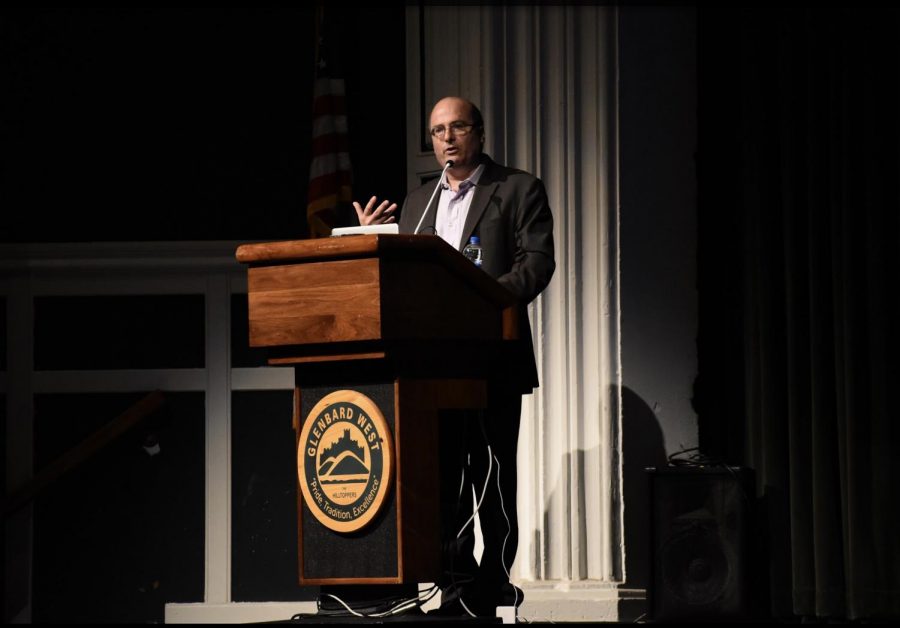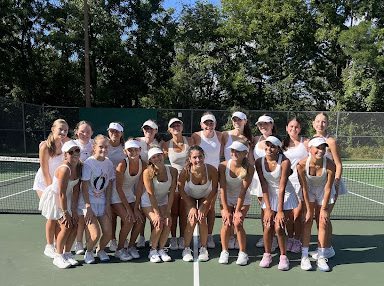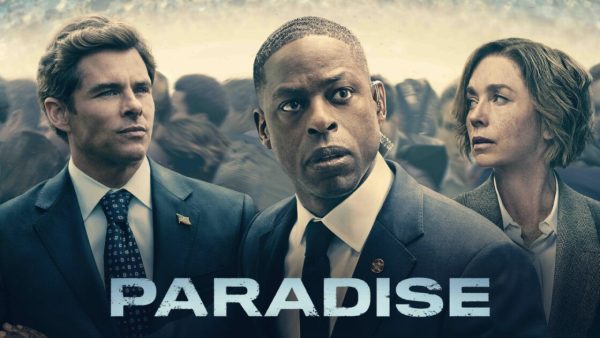GPS Series: David Grann’s discusses research process, writing, history behind of ‘Killers of the Flower Moon’
Commemorating the twenty-ninth anniversary of the District 87 Glenbard Parent Series, best-selling author David Grann hosted the book talk on his novel, Killers of the Flower Moon: The Osage Murders and the Birth of the FBI on September 5th.
The Glenbard Parent Series is an event held by District 87 that is open to the local community and requires no registration: “This is for everyone,” as the founder of the parent series, Gilda Ross, mentions.
Kicking off the yearlong series, Grann explored the basis of Killers of the Flower Moon and provided insight on the extensive research and preparation that was required to write such a novel. Not only did David Grann produce electrifying stories, he immersed himself in them. As soon as the discussion began, it was clear that Grann was able to captivate his audience from the start.
Grann, when speaking about his text, dissected his work; he set up the context, premise, and plot. Although it has been less than a century after the Osage killings, it seemed that the intentional erasure of this part of history has led to no little memory of the tragedies. Grann further showed, through his piece, that the systematic murders of the wealthy, oil-rich Osage, were not caused by the rogue deeds of a singular villain, but rather a culture.
In the early 1900s, the Osage and the United States government had negotiated a contract in which the Osage Tribe worked in a clause that all resources, from oil to minerals, on their land was reserved by them. More than a decade later, the tribe members became hugely wealthy as did their headrights, who had been able to receive profits derived from their estates. The conditions soon worsened when Congress began to require white guardians — some of whom were willing to do anything to get their hands on their fortunes — to manage the tribe’s wealth.
Grann, through his writing, wanted to uncover the history that had and still continued to be masked and hidden; he wanted to explore the voices that were suppressed for decades and he wanted people to “learn this history.” Although he acknowledged that it was “far too late to bring justice,” he also noted that during his multi-year research process that “more voices are being heard” and, thus, “more stories are being told.” The multiple perspectives he heard “show the elliptical qualities of history” that he tried to mimic in his book.
In his book, Grann retells the Osage murders in three different perspectives. The first part of the novel explores the world of Osage Nation, particularly the Burkhart family. Mollie Burkhart, an Osage woman, is married to a white man named Ernest Burkhart. Her sisters are also married to white men. When her sister, Minnie, passed away unexpectedly due to an unknown “illness,” her other sister Anna is found dead in a ravine soon after. The Osage are slowly disappearing, including Mollie’s entire family and she has a feeling that she may be next. The second part of the novel tackles the point of view of the federal investigators who start exploring these chains of death, including William Hale, J. Edgar Hoover, and Tom White. In the third part of the novel, Grann makes a series of trips between 2012 and 2015, diving in-depth into the researching and interviewing process that helped him write such a novel.
In an interview after the discussion of his book, Grann revealed that he is a “big believer in telling stories that pull you along,” especially “when you tell someone a difficult part of history.” He elaborated that he preferred to format his novel to carry out this effect. The intrigue of the novel “was an organic mystery” as it happened naturally when “the story was told” and the way it unfolded. It helps the reader understand the real people who were affected by those tragedies and those who caused it: “you are feeling it as they felt it,” Grann says, because “they do not have the powers of hindsight.” This does not only pull readers in, “but lets [readers] experience how the mystery truly unfolds.” Unlike how history is normally told, there is “no God-like narrator” and the individuals in his work “do not pretend to be omniscient.”
Fans of Grann’s captivating plots will be eager to find out that Killers of the Flower Moon is currently being made into a feature film directed by Martin Scorsese. Grann is excited for the film as “the book can only reach so many people and [his] hope is that the movie can reach so many more.” Stay tuned for the film and any of his upcoming work. Thank you to David Grann for being able to come to Glenbard West for the Parent Series!

Michelle is the Co-Editor-in-Chief of the Glen Bard. She is currently a senior and is excited to be part of the Glen Bard staff. Her passions include reading,...










